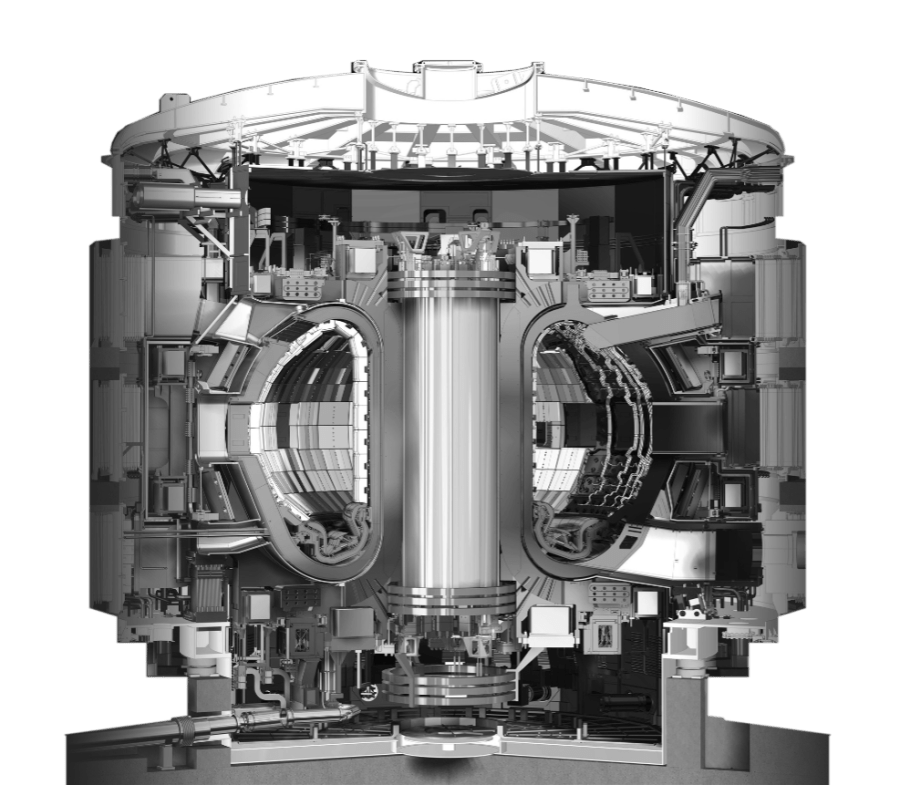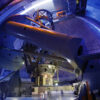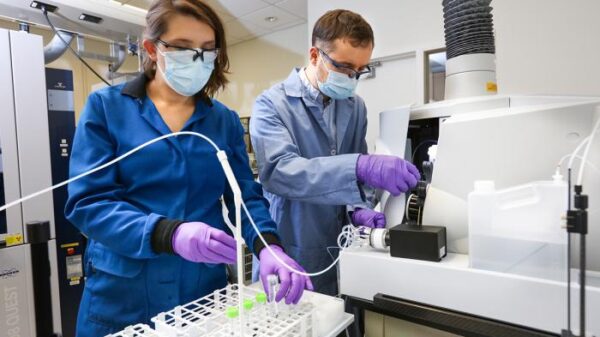Japan may have taken a large step towards solving the climate change crisis with the launch of the world’s largest experimental nuclear fusion reactor.
Announced on Wednesday, the launch represents a significant development in the bid to harness nuclear fusion, which many experts believe will help countries meet energy demands in the future.
A tokamak uses powerful magnetic fields to confine plasma—superheated hydrogen isotopes—within a vacuum chamber. Extreme temperatures (over 100 million°C) cause deuterium and tritium nuclei to collide and fuse, releasing vast energy as helium and a high-speed neutron. The neutron then escapes the magnetic field, transferring heat to surrounding materials, which can generate electricity. This process mimics the Sun’s energy production.
The reactor stands in a massive hangar in Naka, just north of Tokyo. This six-story-high machine contains a donut-shaped “tokamak” vessel that holds swirling plasma heated to 200 million degrees Celsius. Scientists heat the plasma to overcome the natural repulsion between atomic nuclei and initiate the fusion reaction.
The difference between nuclear fusion and nuclear fission is that traditional reactors involve the splitting of an atomic nucleus. This releases vast amounts of energy. However, fusion is still in an experimental stage.
The JT-60SA reactor aims to assess whether fusion can serve as a safe, large-scale energy source. Scientists seek to achieve a net energy gain, ensuring the reactor generates more energy from fusion than it consumes. Success in this effort could lead to future commercial fusion power plants, potentially transforming the global energy landscape.
Read more: Trump tariffs complicate its own case for nuclear renaissance
Read more: NevGold finds high-grade gold underneath the surface at Nutmeg Mountain
Tokamak launch is a milestone for fusion energy
Japan and the European Union collaborated internationally to create this ambitious project. It acts as a crucial stepping stone toward the International Thermonuclear Experimental Reactor (ITER), a much larger fusion experiment under construction in France. Scientists will apply lessons from JT-60SA to ITER, moving closer to practical fusion energy. Both projects aim to fuse hydrogen nuclei into helium, releasing energy as light and heat.
Sam Davis, deputy project leader for JT-60SA, expressed optimism about the achievement, stating that the device will “bring us closer to fusion energy.” He emphasized the project’s collaborative nature, involving over 500 scientists, engineers, and more than 70 companies across Europe and Japan.
Meanwhile, EU Energy Commissioner Kadri Simson praised JT-60SA as “the most advanced tokamak in the world” and called its launch “a milestone for fusion history.” She also indicated fusion’s potential to become a key part of the global energy mix in the latter half of this century.
Omar Hurricane, the program leader at Lawrence Livermore National Laboratory agreed.
“I do think fusion looks a lot more plausible now than it did 10 years ago as a future energy source,” said Hurricane in 2023. “But it’s not going to be viable in the next 10 to 20 years, so we need other solutions.”
According to the ITER organization, Fusion has the potential to provide virtually limitless energy while minimizing the environmental and safety risks associated with nuclear fission.
Read more: Cameco JV stalls uranium production over bureaucratic holdup
Read more: Skyharbour Resources to acquire Athabasca Basin uranium project from Denison Mines
National Ignition Facility uses different fusion method
Numerous organizations around the world are pursuing the potential of nuclear fusion as a sustainable energy solution.
In the United States, the National Ignition Facility (NIF) at Lawrence Livermore National Laboratory employs a different fusion method called inertial confinement, using powerful lasers to initiate fusion. NIF made headlines in 2022 by achieving “net energy gain” from fusion, marking a significant milestone in fusion research.
Private companies are also entering the fusion race. Commonwealth Fusion Systems, a spin-off from the Massachusetts Institute of Technology (MIT), focuses on creating compact, high-field magnets to enable more efficient fusion reactors.
Similarly, Tokamak Energy in the UK is working on a compact spherical tokamak, aiming to accelerate the development of fusion power. Companies like Helion Energy and Tae Technologies are pursuing innovative approaches like magnetized target fusion and other advanced reactor designs to achieve commercial viability. These organizations, alongside government-led efforts, are pushing fusion from concept to reality.
.
joseph@mugglehead.com














